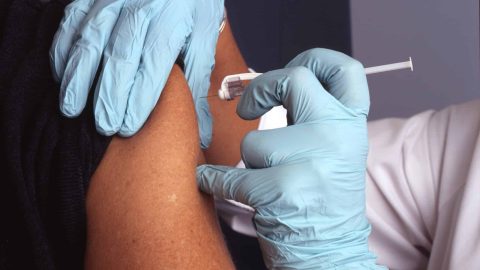When Russian President Vladimir Putin celebrated his “Mission Accomplished” moment on August 11th with the announcement of Sputnik V, the world’s first SARS-CoV-2 vaccine, the global scientific community reacted with a mix of skepticism and condemnation. Is this warranted or a result of russophobia?
What is Sputnik V?
Gam-COVID-Vak, better known under its politicized name Sputnik V, is an adenovirus-vector vaccine developed by the Gamaleya Institute in the Moscow under the purview of the Russian Ministry of Health. The vaccine uses two different vectors to train the human body for the SARS-CoV-2 spike protein. Ad26 (same as the J&J vaccine) for the “primer” shot and Ad5 (same as the CanSino vaccine) as the “booster” 21 days after the first shot.
Does it work?
We do not know. Although the vaccine has two completed FDA phase I/II trials NCT04436471 and NCT04437875 with 38 participants each, no data on the results was published thus far beyond a press-release about the purported effectiveness. Equally absent are the data on trials conducted on rodents and non-human primates. This follows an established pattern of the Gamaleya Instute of not adhering to international research standards.
Although the Gamaleya Institute is the highest authority for vaccine development in Russia with a history reaching back into the 19th century, the institute has no proven track record. It developed an Ebola vaccine that is thus far only approved in Russia, a country not very prone to Ebola outbreaks, and has not undergone the standard FDA clinical trial process.
The secrecy notwithstanding, there is no reason to believe that the developed vaccine does not elicit some immunity to SARS-CoV-2. The used vectors have shown to be effective in the CanSino (at least somewhat) and J&J vaccines. The big unknowns are the effectiveness given that the vectors are human adenoviruses for which a certain percentage of the populace has at least some immunity, rendering them ineffective, and the duration of the immunity, which in the case of the CanSino vaccine appeared to be short-lived.
Is it safe?
Probably yes. Not considering any potential contaminations during the production, the risk of serious adverse side effects from human adenovirus vector vaccines appears to be low. The vectors are unable to replicate in the human body and even if they could the elicited symptoms would be benign (common cold). Possible side effects include fever, fatigue, and muscle pain. Nevertheless, subjecting the population to vaccine with unknown rare side effects is unethical. Even if an extreme side effect appears for 1 in 2000 people, this would affect 50.000 people in Russia alone if the entire susceptible population is vaccinated.
Who will get it?
Medical personnel will be the first to receive the vaccine. According to press releases, the vaccination will be voluntary. Children will not be vaccinated, as the researchers claim that have to find a lower tolerable dose first. Russia aims to produce 5 million doses per month in December and January. At this rate, assuming that a dose refers to an entire vaccination course (primer & booster), it would take Russia 20 months to vaccinate enough of its people. The fact that the vaccine has two different components increases the monitoring requirements during distribution and will pose an administrative burden on the stretched Russian health apparatus.
Summary
Sputnik V is a publicity stunt that will at best generate some immunity for frontline health care workers with tolerable safety risks and at worst an ineffective vaccine with extreme but rare side effects. My guess is, given the low production capacity, that Russia, like most countries, will source many different vaccines to inoculate the entire susceptible population.
Legal note:
Prognoses are no reliable indicator for future performance.
Legal disclaimer
This document is an advertisement. Unless indicated otherwise, source: Erste Asset Management GmbH. The language of communication of the sales offices is German and the languages of communication of the Management Company also include English.
The prospectus for UCITS funds (including any amendments) is prepared and published in accordance with the provisions of the InvFG 2011 as amended. Information for Investors pursuant to § 21 AIFMG is prepared for the alternative investment funds (AIF) administered by Erste Asset Management GmbH pursuant to the provisions of the AIFMG in conjunction with the InvFG 2011.
The currently valid versions of the prospectus, the Information for Investors pursuant to § 21 AIFMG, and the key information document can be found on the website www.erste-am.com under “Mandatory publications” and can be obtained free of charge by interested investors at the offices of the Management Company and at the offices of the depositary bank. The exact date of the most recent publication of the prospectus, the languages in which the fund prospectus or the Information for Investors pursuant to Art 21 AIFMG and the key information document are available, and any other locations where the documents can be obtained are indicated on the website www.erste-am.com. A summary of the investor rights is available in German and English on the website www.erste-am.com/investor-rights and can also be obtained from the Management Company.
The Management Company can decide to suspend the provisions it has taken for the sale of unit certificates in other countries in accordance with the regulatory requirements.
Note: You are about to purchase a product that may be difficult to understand. We recommend that you read the indicated fund documents before making an investment decision. In addition to the locations listed above, you can obtain these documents free of charge at the offices of the referring Sparkassen bank and the offices of Erste Bank der oesterreichischen Sparkassen AG. You can also access these documents electronically at www.erste-am.com.
Our analyses and conclusions are general in nature and do not take into account the individual characteristics of our investors in terms of earnings, taxation, experience and knowledge, investment objective, financial position, capacity for loss, and risk tolerance. Past performance is not a reliable indicator of the future performance of a fund.
Please note: Investments in securities entail risks in addition to the opportunities presented here. The value of units and their earnings can rise and fall. Changes in exchange rates can also have a positive or negative effect on the value of an investment. For this reason, you may receive less than your originally invested amount when you redeem your units. Persons who are interested in purchasing units in investment funds are advised to read the current fund prospectus(es) and the Information for Investors pursuant to § 21 AIFMG, especially the risk notices they contain, before making an investment decision. If the fund currency is different than the investor’s home currency, changes in the relevant exchange rate can positively or negatively influence the value of the investment and the amount of the costs associated with the fund in the home currency.
We are not permitted to directly or indirectly offer, sell, transfer, or deliver this financial product to natural or legal persons whose place of residence or domicile is located in a country where this is legally prohibited. In this case, we may not provide any product information, either.
Please consult the corresponding information in the fund prospectus and the Information for Investors pursuant to § 21 AIFMG for restrictions on the sale of the fund to American or Russian citizens.
It is expressly noted that this communication does not provide any investment recommendations, but only expresses our current market assessment. Thus, this communication is not a substitute for investment advice.
This document does not represent a sales activity of the Management Company and therefore may not be construed as an offer for the purchase or sale of financial or investment instruments.
Erste Asset Management GmbH is affiliated with the Erste Bank and austrian Sparkassen banks.
Please also read the “Information about us and our securities services” published by your bank.


